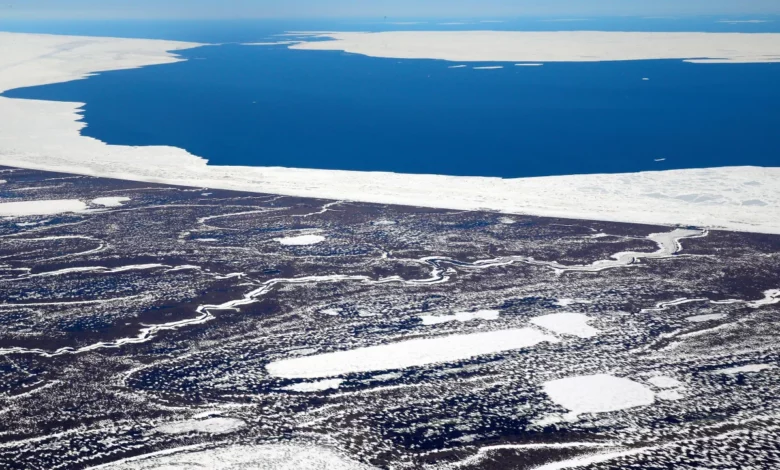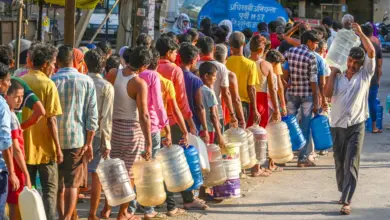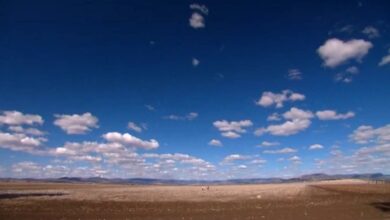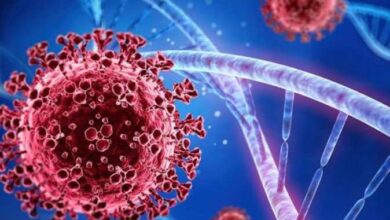
Permafrost is a hard layer of frozen ground made of soil, sand and rocks in high-latitude or high-altitude areas such as Greenland, Alaska, Siberia, the Tibetan Plateau and northern Canada. This icy layer traps microbes that remain dormant for long periods of time — but a warming planet could create conditions suitable for these pathogens to return from the past, according to new research.
To better understand the possible ecological effects, an international team of researchers digitally modeled the interactions between an ancient virus and modern bacteria in a study published July 27 in the journal PLOS Computational Biology.
Through tens of thousands of iterations, the study team tracked how the virus affected species diversity of a bacterial community. About 1 percent of the ancient viruses caused major disruptions to the digital ecosystems. The pathogen either increased diversity by up to 12 percent or, conversely, decreased species diversity by 32 percent. The viral invaders not only survived but evolved over time, throwing the system off-balance.
Researchers used a software called Avida to simulate whether pathogens would be successful at infiltrating an ecosystem. In a two-dimensional grid, bacterial organisms interacted with their environment to compete for energy and space. Competitors who found their niche could reproduce and live on through the cycles.
In doing so, there were slight errors in reproduction that created genetic diversity, resulting in a more complex ecosystem. When the virus entered this environment, like any other parasite, it was only able to get energy by leaching off suitable bacterial hosts. The hosts were then unable to receive the energy they needed to survive or reproduce and, subsequently, died.
Does this mean that nearly one-third of humans and other living organisms will soon be at risk of dying from a reawakened viral disease? No, but lead author Giovanni Strona and coauthor Corey Bradshaw said the findings add yet another layer of concern to the risks from an ever-warming climate.
Invasive species can diminish biodiversity
In the past two decades, more research has been dedicated to understanding the consequences of permafrost melt in Arctic regions, such as a January 2022 NASA study that investigated the effects of carbon release during abrupt thawing events and Jean-Michel Claverie’s decade-long look into potentially infectious pathogens locked in permafrost.
Claverie, a professor emeritus of medicine and genomics at the Aix-Marseille University School of Medicine, revived what he called “zombie” viruses from permafrost in 2014 and 2015, and he and his team reported five new families of ancient viruses capable of infecting amoebas in a February study, as previously reported by CNN. The research led by Claverie proved that ancient microbes could still be infectious despite lying dormant for tens of thousands of years.
Using that assumption from Claverie’s work, Bradshaw, director of the Global Ecology Laboratory at Flinders University in Australia, and Strona, a senior researcher at the European Commission’s Joint Research Centre, designed a simulation to quantify the consequences these pathogens could have.
While 1 percent of pathogens causing major disruption seems low, 4 sextillion cells escape from permafrost every year, Bradshaw said. That’s far more than the number of stars in the galaxy.
“One percent of 4 sextillion is a number most people can’t even conceive. There’s so many, many opportunities for this to happen. … The probability is rare for one individual virus, but there are so many potential viruses,” he told CNN in a phone interview.
Bradshaw likened the viruses within permafrost to any other invasive species. In the real world, most invasions fail, which the study mirrored. But the reason we still have problems with invasive species, he said, is that there are so many introductions to an ecosystem.
During the study’s successful invasion events, the resulting 32 percent loss of species diversity doesn’t mean that the virus killed one-third of all bacteria in the digital ecosystem, Strona said. Rather, it means that the entire ecosystem saw a loss in bacterial diversity by 32 percent.
When the viruses infected the bacteria and killed their hosts, the effects on the ecosystem were catastrophic. The resources that existed at equilibrium simply weren’t available anymore, so the remaining species were forced into an arms race for survival, Bradshaw said. Predators and prey fought for use of the resources that were left, throwing the system off-balance. If there were less predators to consume prey, prey thrived, overpopulated and then used too many resources. The overproduction then reduced prey populations in a natural culling. If there were more predators, they would consume too much prey for sustainable survival, leading to the same result.
The introduction of the virus was the only cause for this major species diversity fluctuation, researchers found.
The role of carbon emissions
Modern organisms, including humans, have few, if any, natural defense mechanisms for ancient pathogens. But for the research team, the study is more of a call to action than a true warning, Strona and Bradshaw said.
“We don’t need to sound the alarm just yet,” said Dr. Kimberley Miner, a climate scientist at the NASA Jet Propulsion Laboratory in Pasadena, California. She said she believes there are more pressing concerns with the climate crisis that are far more controllable, such as slowing the output of carbon into the atmosphere.
The study is a great first step in quantifying the risks from these unknown variables, said Miner, who was not involved with this research. But the chance of infection from these emerging pathogens is still “highly improbable.”
The areas containing Earth’s permafrost are sparsely populated. If ancient pathogens did somehow manage to escape, they would have trouble finding people to infect. Moreover, permafrost melts gradually throughout the year at a rate of about 1.2 inches (3 centimeters) per season, and most of the 4 sextillion cells are released during this gradual thaw, Miner said.
Abrupt thaws in Arctic permafrost, sometimes occurring as quickly as a matter of days, are “what we are most concerned about in terms of releasing organisms that we’re not familiar with,” she explained.
With the average global temperature increasing, these abrupt thaws will only become more common. After record high temperatures in July, drone footage captured Siberia’s largest permafrost crater sinking as the ice below ground melted.
Strona and Bradshaw cited the need for more research to extend the implications of their findings to human or animal populations. Both researchers said their intention was to give a framework for assessing the risk of biological invaders from a bygone era.
The only preventive action in all these cases — be it sea level rise, deadly heat or emerging pathogens — is to slow or stop carbon emissions that lead to global warming and protect Arctic ecosystems, the study authors said. Without doing so, the cascading ecological effects will no longer be science fiction, they said.



